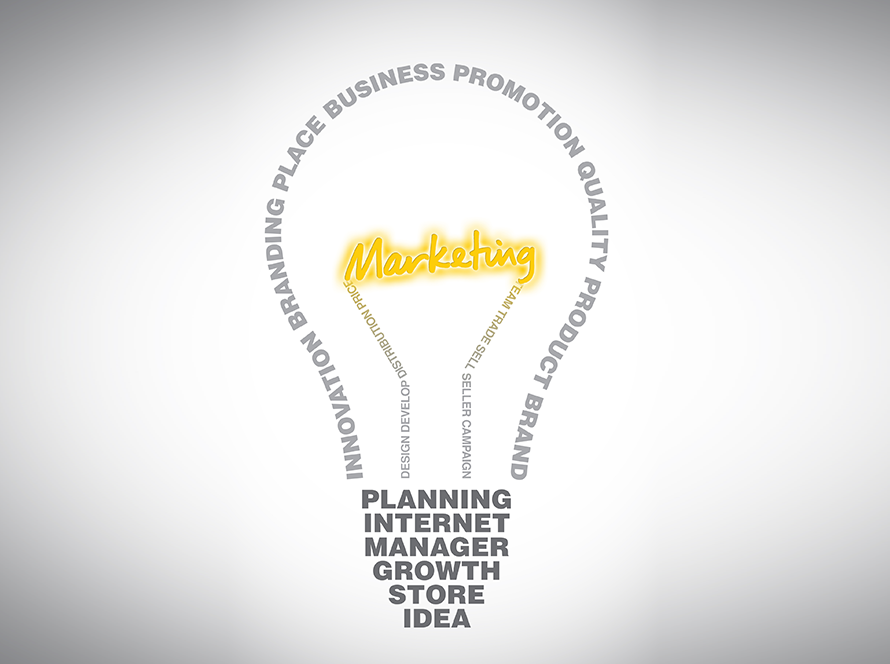Unlock the power of social media for your small business! In today’s digital landscape, a strong online presence is paramount. A dedicated social media marketing agency can transform your brand, connect with your ideal customers, and drive significant growth. This guide provides a comprehensive roadmap to help you choose the right agency and develop a winning strategy.
From identifying your target audience to measuring campaign success, we’ll explore the essential steps to navigate the complexities of social media marketing. Discover how to leverage various platforms, create engaging content, and build a thriving online community for your small business.
Introduction to Social Media Marketing for Small Businesses
Social media has revolutionized how businesses connect with customers. For small businesses, leveraging these platforms effectively can be a game-changer, opening doors to new markets and boosting brand visibility. A well-executed social media strategy can drive traffic, generate leads, and ultimately, boost revenue.
Social media marketing is no longer an option, but a necessity for small businesses hoping to thrive in today’s digital landscape. A robust presence across platforms like Facebook, Instagram, and TikTok can significantly enhance brand awareness, fostering customer engagement and loyalty.
Importance of Social Media Marketing for Small Businesses
Small businesses often lack the resources of larger corporations, making it crucial to find cost-effective marketing strategies. Social media offers a powerful platform to reach a wider audience at a fraction of the cost of traditional advertising. It’s a direct line to potential customers, allowing businesses to engage in meaningful conversations, build relationships, and showcase their unique offerings.
Benefits of Using a Social Media Marketing Agency
Outsourcing social media management to a dedicated agency offers several advantages for small businesses. Agencies possess the expertise, tools, and strategies to optimize your social media presence, maximizing ROI. They stay up-to-date with the ever-changing algorithms and trends, ensuring your content remains relevant and engaging. This allows your business to focus on core operations, knowing that your social media presence is in capable hands.
Common Challenges Small Businesses Face in Social Media Management
Many small businesses struggle with the time commitment, technical aspects, and evolving nature of social media. Creating engaging content consistently, managing multiple platforms, and staying abreast of the latest trends can be overwhelming. Keeping up with the algorithms, ensuring high-quality posts, and measuring campaign success all require dedicated attention and resources that small businesses may not have in-house.
In-House vs. Outsourced Social Media Management
| Feature | In-House Social Media Management | Outsourcing to an Agency |
|---|---|---|
| Cost | Potentially lower upfront costs (depending on employee salaries and training), but ongoing costs for employee salaries, benefits, and equipment. | Fixed monthly fees, typically more predictable and often lower than long-term in-house staffing costs. |
| Expertise | Requires hiring and training staff with social media expertise, potentially a significant time investment. | Leverages experienced social media specialists, ensuring expertise and up-to-date knowledge of best practices. |
| Time Commitment | Requires dedicated time for content creation, scheduling, engagement, and monitoring. Can detract from core business functions. | Frees up business owners and employees to focus on core operations, allowing them to delegate social media tasks to specialists. |
| Adaptability | Requires constant learning and adaptation to evolving social media trends. | Agencies are equipped to quickly adapt to algorithm changes and new trends, ensuring your strategy remains current. |
| Scalability | Scaling in-house resources can be slow and costly. | Agencies can scale their services to meet the evolving needs of your business. |
Identifying Target Audience and Goals

Knowing your ideal customer is crucial for any small business, especially when crafting a social media strategy. Understanding who your target audience is, and what they want, will help you tailor your content and messaging for maximum impact. This, combined with clear goals, allows you to measure success effectively and adjust your strategy as needed.
Identifying your target audience isn’t just about demographics; it’s about understanding their needs, pain points, and online behavior. This detailed understanding allows you to create content that resonates with them and drives engagement. Clear goals provide a roadmap for your social media efforts, allowing you to track progress and make necessary adjustments.
Identifying the Ideal Customer Profile
Understanding your ideal customer profile (ICP) is the first step in creating a targeted social media strategy. This involves researching your existing customer base and identifying common traits, interests, and behaviors. This research will help you to create tailored content that resonates with them. Examples include analyzing demographics (age, location, gender), psychographics (interests, values, lifestyle), and online behavior (social media platforms used, content consumed). This detailed understanding allows for a targeted approach to social media marketing, ensuring your message reaches the right audience.
Defining Clear Marketing Objectives
Setting clear marketing objectives for your social media campaigns is essential for measuring success and making informed decisions. These objectives should be specific, measurable, achievable, relevant, and time-bound (SMART). For example, instead of “increase brand awareness,” a SMART objective would be “increase brand awareness by 15% among our target demographic within the next quarter.” This specific and measurable objective allows for tracking and analysis of results.
- Increase Brand Awareness: This objective focuses on raising the visibility of your brand within the target audience. Track this by monitoring website traffic, social media mentions, and brand searches. An example is running targeted social media ads to increase visibility among a specific demographic.
- Drive Website Traffic: Direct traffic from social media to your website is a key objective. Measure this by tracking website visits from social media channels, and analyze which posts and content drive the most traffic. An example is promoting a special offer or product launch on social media, encouraging users to visit your website.
- Generate Leads: Lead generation is about collecting contact information from potential customers. Measure this by tracking the number of sign-ups for newsletters, requests for quotes, or other lead-generating actions on social media. An example is creating a lead magnet (e.g., a free e-book or checklist) in exchange for email addresses.
- Boost Sales: This objective is focused on driving direct sales through social media. Track this by monitoring sales conversions from social media, and analyze which products or promotions are most effective. An example is running a social media contest or giveaway to encourage purchases.
Measuring Social Media Campaign Success
Effective measurement of social media campaign success is crucial for optimizing future efforts. Use a variety of metrics to assess campaign performance. This includes tracking key performance indicators (KPIs) such as engagement rates, reach, website traffic, and conversion rates. Regular monitoring of these metrics allows for adjustments to the strategy to ensure it aligns with your goals. By analyzing these metrics, you can gain insights into what’s working and what needs improvement.
Social Media Platforms and Business Types
Choosing the right social media platform for your business depends heavily on your target audience and industry. Different platforms cater to different demographics and business needs.
| Social Media Platform | Suitable Business Types | Rationale |
|---|---|---|
| Most businesses | Large user base, diverse audience, excellent for community building and advertising. | |
| Visual-based businesses (e.g., fashion, food, art) | Strong visual focus, excellent for showcasing products and building brand aesthetics. | |
| Businesses needing quick updates, news, or real-time engagement | Excellent for real-time communication and engaging with customers. | |
| Businesses in professional services, B2B marketing | Professional network, suitable for reaching a business-oriented audience. | |
| TikTok | Businesses targeting younger demographics, creative industries | Short-form video format, highly engaging, good for reaching younger audiences. |
Developing a Social Media Strategy

Crafting a tailored social media strategy is crucial for small businesses to stand out in the crowded digital landscape. A well-defined strategy will guide your efforts, ensuring your posts resonate with your target audience and achieve your business objectives. It’s not just about posting; it’s about strategically connecting with your customers and driving meaningful engagement.
A robust social media strategy acts as a roadmap, outlining specific actions and goals. It ensures your social media presence is aligned with your overall business objectives, maximizing the return on your investment of time and resources. This involves understanding your target audience, identifying your key performance indicators (KPIs), and choosing the right platforms to reach them.
Creating a Tailored Social Media Strategy
A tailored social media strategy goes beyond generic posts. It involves deep understanding of your target audience, your unique brand voice, and your business goals. By analyzing your competitors, identifying trends, and defining your brand personality, you can craft a distinctive strategy. This process should involve analyzing your current social media performance, setting specific, measurable, achievable, relevant, and time-bound (SMART) goals, and selecting the most effective platforms for your audience. For instance, if your target audience is primarily on Instagram, your strategy should prioritize visually engaging content.
Elements of an Effective Content Calendar
A well-structured content calendar is essential for maintaining a consistent and engaging social media presence. It acts as a schedule for your posts, ensuring your content aligns with your overall marketing strategy. This involves planning topics and themes in advance, considering the best times to post based on your audience’s activity patterns, and creating diverse content formats (images, videos, stories, and more). A consistent posting schedule fosters anticipation and keeps your audience engaged.
- Content Variety: Mix up your content to keep it interesting. Include engaging stories, informative articles, behind-the-scenes glimpses, and interactive polls to maintain audience interest.
- Posting Frequency: Consistency is key. Determine a posting frequency that works for your business and audience. Tools can help you schedule posts in advance.
- High-Quality Visuals: Use high-resolution images and videos. Ensure they align with your brand’s aesthetic and messaging.
- Relevant Hashtags: Research and use relevant hashtags to increase visibility and reach a wider audience.
Improving Brand Engagement and Customer Interaction
Active engagement with your audience is vital for building brand loyalty and fostering strong customer relationships. Responding promptly to comments and messages demonstrates that you value your customers. Creating interactive content, such as polls and Q&As, encourages participation and fosters a sense of community. Utilizing user-generated content (UGC) can significantly boost your brand’s credibility.
- Respond to Comments and Messages: Acknowledge and respond to comments and messages in a timely manner. This shows that you value your customers.
- Run Contests and Giveaways: Boost engagement by running contests and giveaways. This encourages interaction and attracts new followers.
- Ask Questions: Engage your audience by asking questions related to your products or services. This can spark discussions and gather valuable feedback.
- Collaborate with Influencers: Partnering with relevant influencers can significantly expand your reach and increase brand awareness.
Tools for Tracking Social Media Performance
Tracking social media performance is essential for measuring the effectiveness of your strategies. Various tools can help you monitor key metrics, such as engagement rates, reach, and website traffic. Analyzing these metrics allows you to refine your strategy and optimize your efforts for maximum impact. Regular monitoring allows for informed decision-making and demonstrates a commitment to data-driven social media management.
- Google Analytics: Tracks website traffic and social media referrals. Provides valuable insights into user behavior.
- Hootsuite/Buffer: Scheduling and monitoring tools for multiple social media platforms. Allows for comprehensive management of your social media presence.
- Sprout Social: Comprehensive social listening and engagement tool. Provides insights into conversations surrounding your brand.
- Socialinsider: Provides detailed analytics and reporting on your social media performance.
Content Creation and Optimization
Creating compelling content is key to grabbing attention and driving engagement on social media. It’s not just about posting; it’s about crafting content that resonates with your target audience, encourages interaction, and ultimately helps your business achieve its goals. This involves understanding your audience’s needs and preferences and tailoring your content to meet those needs.
Effective content creation goes beyond simply posting; it’s about understanding your audience, choosing the right platforms, and optimizing your content for maximum impact. This includes selecting the best formats for each platform, crafting high-quality visuals, and optimizing your content for search engines and algorithms.
Types of Engaging Content
Understanding the diverse types of content that resonate with your target audience is crucial. Different content formats appeal to different preferences. Videos, for example, can be exceptionally engaging, while infographics can effectively communicate complex information in a visually appealing way.
- Videos: Short-form videos, like TikTok or Instagram Reels, are perfect for showcasing products, demonstrating processes, or sharing behind-the-scenes glimpses. They can be a highly effective tool for boosting brand awareness and generating excitement.
- Infographics: Visual representations of data, statistics, or information can simplify complex topics, making them more accessible and engaging for your audience. They’re ideal for sharing industry insights or highlighting key product features.
- User-Generated Content (UGC): Encouraging customers to share their experiences with your brand through reviews, photos, or videos is a powerful way to build trust and authenticity. This can be promoted by running contests or using relevant hashtags.
- Interactive Content: Polls, quizzes, and Q&A sessions can foster engagement and gather valuable feedback from your audience. This allows you to directly interact with your customers and understand their preferences.
- Behind-the-Scenes Content: Offering a glimpse into your company culture, processes, or team members can humanize your brand and foster a stronger connection with your audience. This is often very effective on Instagram.
Creating High-Quality Visual Content
Visual content is paramount for capturing attention on social media. High-quality images and videos are crucial to make your posts stand out from the noise.
- High-Resolution Images and Videos: Use professional-grade equipment or high-quality editing software to ensure that your visuals are sharp and clear. Poor quality visuals can diminish the impact of your message.
- Consistent Branding: Maintain a consistent brand aesthetic across all your social media platforms. This creates a cohesive and recognizable brand identity, making your posts easily identifiable.
- Engaging Visual Storytelling: Use visuals to tell compelling stories about your brand, products, or services. A captivating visual narrative can create a memorable experience for your audience.
- Relevant Imagery: Choose images and videos that are relevant to your content and target audience. Visually appealing content is more likely to be shared and noticed.
Optimizing Content for Different Platforms
Each social media platform has its own unique characteristics and algorithms. Understanding these differences and adapting your content accordingly is crucial for success.
- Platform-Specific Formats: Optimize your content for the specific format and features of each platform. For example, use short-form videos for TikTok, engaging captions for Instagram, and detailed articles for LinkedIn.
- Target Audience Preferences: Tailor your content to the specific interests and preferences of your target audience on each platform. Research what types of content are popular on each platform.
- Platform Algorithms: Understanding how each platform’s algorithm works is vital. Tailoring your content to align with the algorithm’s preferences can increase visibility.
Best Practices for Posting at Optimal Times
Posting at optimal times can significantly impact your content’s visibility and engagement.
| Platform | Best Posting Times (Examples) | Reasoning |
|---|---|---|
| Weekdays, 10 AM – 2 PM, 6 PM – 8 PM | Peak engagement hours for many users. | |
| Weekdays, 9 AM – 12 PM, 5 PM – 7 PM | Many users are active during work and commute times. | |
| Weekdays, 10 AM – 2 PM, 4 PM – 6 PM | Significant activity during working hours. | |
| Weekdays, 9 AM – 12 PM, 4 PM – 6 PM | Professional networking platform, peak hours align with working hours. |
Measuring and Analyzing Results

Tracking social media performance is crucial for understanding what works and what doesn’t. A robust system for monitoring metrics allows you to optimize your strategy and maximize return on investment (ROI). Analyzing data provides insights into audience engagement, campaign effectiveness, and overall business growth.
Key Performance Indicators (KPIs)
Understanding which metrics matter most is vital for evaluating your social media efforts. Different KPIs will be important depending on your specific goals. Commonly tracked metrics include engagement (likes, comments, shares), reach (impressions and followers), website traffic, and conversions. By monitoring these metrics regularly, you can identify trends and make informed decisions.
Interpreting Social Media Analytics Dashboards
Social media analytics platforms offer comprehensive dashboards for visualizing your performance data. These dashboards typically present data in charts and graphs, allowing for a clear overview of key metrics. Understanding how to interpret these visuals is essential. For example, a sudden drop in engagement might indicate a need to adjust your content strategy.
Tracking ROI and Campaign Effectiveness
Measuring the return on your social media investment is important for justifying your budget and demonstrating the value of your efforts. A simple calculation can be used to track ROI. For instance, if a social media campaign generated $10,000 in sales and cost $2,000 to run, the ROI would be 400%. This helps you to assess the financial impact of your social media strategy. Tracking website traffic from social media posts can also show the effectiveness of your campaigns.
Adjusting Strategies Based on Performance Data
Regular analysis of your social media performance allows you to adapt your strategy as needed. If a particular type of content isn’t performing well, consider adjusting your approach. This could involve changing the tone, style, or frequency of your posts. For example, if your engagement is low on a particular platform, you may want to allocate more time and resources to that platform. Alternatively, if one type of content consistently performs well, consider creating more of that type of content. Constantly evaluating and refining your strategy is essential for optimizing your social media presence.
Case Studies and Examples

Seeing successful social media campaigns in action can be incredibly inspiring and informative. Real-world examples demonstrate how various strategies can yield impressive results for small businesses. Learning from others’ experiences helps you tailor your own approach to achieve similar positive outcomes.
Understanding how different businesses have leveraged social media effectively provides valuable insights. These case studies offer a practical lens through which to analyze various approaches and identify patterns that lead to success.
Successful Campaigns for Small Businesses
Different businesses, across various industries, have achieved notable success with social media. Analyzing these cases can highlight effective strategies and demonstrate their impact on business growth.
- Local Bakery: A local bakery used engaging content showcasing their freshly baked goods, behind-the-scenes glimpses of the baking process, and customer testimonials. They also ran targeted contests and giveaways to boost engagement and attract new customers. This strategy resulted in a 30% increase in online orders within three months and a 15% increase in foot traffic to their store.
- Boutique Clothing Store: A boutique clothing store leveraged Instagram to highlight their unique style and build a strong brand identity. They collaborated with fashion influencers, used high-quality photos and videos, and created a visually appealing feed. This led to a 20% rise in website traffic and a 10% boost in sales during the peak season.
- Pet Grooming Salon: A pet grooming salon used Facebook to connect with potential clients through informative posts about pet care, showcasing their services, and sharing customer photos. They also hosted live Q&A sessions with pet experts, generating significant interest and resulting in a 25% growth in bookings within six months.
Key Strategies Used in Case Studies
The strategies used in these successful campaigns demonstrate how different approaches can be effective for diverse businesses. These strategies include targeted content creation, strategic engagement with followers, and consistent posting schedules.
- Content Strategy: Tailored content resonated with the target audience. This included high-quality images and videos, engaging captions, and informative posts that addressed customer needs.
- Audience Engagement: Actively responding to comments, messages, and reviews fostered a sense of community and strengthened customer relationships.
- Community Building: Creating a space where customers could interact with the brand and each other fostered loyalty and brand advocacy.
Comparative Analysis of Campaign Results
The following table highlights the results of the different campaign approaches discussed.
| Business Type | Key Strategies | Results |
|---|---|---|
| Local Bakery | Targeted contests, engaging content, showcasing goods | 30% increase in online orders, 15% increase in foot traffic |
| Boutique Clothing Store | Influencer collaborations, high-quality visuals, strong brand identity | 20% rise in website traffic, 10% boost in sales |
| Pet Grooming Salon | Informative posts, customer photos, live Q&A sessions | 25% growth in bookings |
Future Trends in Social Media Marketing

Social media is constantly evolving, and small businesses need to stay ahead of the curve to succeed. Understanding emerging trends and adapting strategies accordingly is crucial for maintaining visibility and engagement with their target audience. This section explores key future trends and how small businesses can prepare for them.
Emerging Trends in Social Media Marketing
The social media landscape is dynamic. From the rise of short-form video to the increasing importance of influencer marketing, small businesses need to adapt their strategies to stay relevant. These trends often overlap and influence one another, creating a complex but exciting environment for marketing.
Impact of New Technologies on Social Media Strategies
New technologies are constantly reshaping how we interact online. Virtual reality (VR) and augmented reality (AR) are poised to become significant players in social media. Businesses can use these technologies to create immersive experiences, showcasing products or services in novel ways. For instance, a furniture store could use AR to allow customers to virtually place furniture in their homes before purchasing.
Adapting to Future Changes in the Social Media Landscape
Staying ahead of the curve requires a proactive approach. Small businesses need to continuously monitor emerging trends and adapt their strategies. This includes experimenting with new platforms, formats, and engagement techniques. By embracing change and remaining flexible, businesses can leverage the ever-evolving social media landscape to their advantage.
Emerging Social Media Platforms
New social media platforms are emerging, offering new opportunities for businesses to connect with their audience. These platforms are often niche-focused, targeting specific demographics or interests.
- TikTok continues to dominate the short-form video market. Small businesses can leverage its reach and algorithm to create engaging content. The platform is excellent for building a community and engaging with younger audiences.
- Threads, a text-based social media platform, offers a different approach to social interaction. Businesses can engage in conversations and build relationships with their audience in a more intimate setting. Its focus on conversations may allow for more authentic interactions.
- Other platforms, such as specialized platforms focused on specific interests, are also worth exploring. Identifying the right platform depends on the specific niche and target audience. This requires market research and a keen understanding of the audience’s online preferences.
Final Wrap-Up
In conclusion, partnering with a social media marketing agency for small businesses is a strategic investment that can yield substantial returns. By understanding your target audience, selecting the right agency, and developing a well-defined strategy, you can unlock your business’s full potential in the digital realm. This guide equips you with the knowledge to navigate the ever-evolving landscape of social media and achieve remarkable results.





